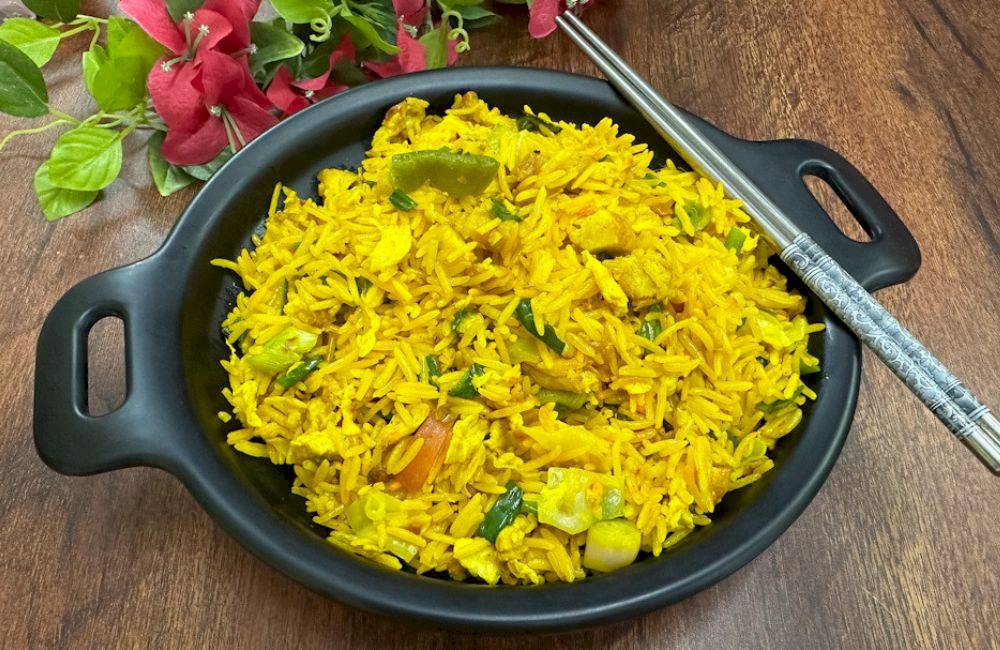Lucknowi Mutton Tahari Recipe


Lucknowi Mutton Tahari Recipe
Mutton Tahari is a delicious rice dish where rice is cooked with meat and spices. It is prepared in different ways across various regions of India. While it may resemble a pulao, its taste is completely different. The amount of spices and the cooking method make it unique.
Mutton Tahari is a Mughlai dish that is widely enjoyed in Hyderabad, Lucknow, and Bengal. Originally, Tahari was a vegetarian dish, but the Mughals and Nawabs transformed it into a non-vegetarian delicacy by adding mutton or beef.
As a child, whenever it rained, my mother would always make hot and flavorful Mutton Tahari. The entire house would be filled with the rich aroma of roasted spices from the stove. We would gather around, enjoying the tahari with raita and pickles. It wasn't just a meal; it was an experience, a cherished memory that still lives on. That’s why, especially during the rainy season, I make Mutton Tahari at least once or twice.
What is Mutton Tahari?
Mutton Tahari is a one-pot dish where mutton is first cooked with onions, tomatoes, whole spices, and powdered spices until it becomes tender and juicy. Then, rice, fresh coriander, mint, and green chilies are added and cooked together, allowing every grain of rice to absorb the flavors of the spices.
Mutton Tahari is commonly prepared in South Asian countries like India, Pakistan, and Bangladesh. It is often cooked at home on special occasions, parties, or gatherings. The rich and aromatic texture of this dish makes it highly popular. In cities like Hyderabad, Delhi, Lucknow, and Kolkata, chefs prepare it using their own unique styles.
Difference Between Mutton Tahari and Mutton Biryani
Many people think that Mutton Biryani and Mutton Tahari are the same dish, but their taste and cooking methods are completely different.
Mutton Tahari is often called the cousin of Biryani because its taste and flavor are somewhat similar. However, those who eat both dishes frequently know that they are entirely different.
In Mutton Tahari, meat and rice are cooked together in the same pot. First, the mutton is cooked with spices, and then rice is added and cooked along with it. On the other hand, in Biryani, the meat and rice are cooked separately and then layered together before being cooked further using the dum method.
In Tahari, the mutton, spices, and rice are fully blended, giving it a rich and uniform taste. In contrast, Biryani has distinct layers—separate rice layers, a layer of mutton, and a layer of spices—resulting in a more varied taste.
Mutton Tahari has a more consistent and spicy flavor because everything is mixed and cooked together, whereas in Biryani, you get plain rice in some bites and flavorful spiced mutton in others.
Ingredients Used in Mutton Tahari
1. Mutton: For the best taste, use bone-in goat meat or lamb. The bones enhance the flavor, making the Tahari more delicious. You can also make it with chicken or beef. Chicken Tahari cooks much faster than mutton.
2. Rice: Traditionally, Basmati or Sella rice is used for Tahari, but I prefer Kolam rice. These grains are slightly smaller, but they have a distinct aroma and flavor. My family enjoys pulao and Tahari made with Kolam rice, so I usually stick to that. However, you can use high-quality long-grain Basmati rice if you prefer.
3. Tomatoes & Yogurt: I use tomatoes in this recipe, but you can substitute them with yogurt or use both for a richer flavor.
4. Fresh Herbs & Spices: Fresh coriander, mint, and green chilies enhance the aroma and taste of the dish. Do not skip them, as they add a refreshing touch to the Tahari.
Recipe Details
PREP TIME
COOK TIME
TOTAL TIME
COURSE
CUSINE
SERVING
Ingredients
For Cooking Mutton:
½ cup oil
2 green cardamoms
1 black cardamom
3-4 black peppercorns
2-3 cloves
2-3 bay leaves
1 small piece of cinnamon stick
1 large onion (finely chopped) or 2 medium-sized onions
400g mutton (cleaned)
1 tbsp ginger-garlic-green chili paste
¼ tsp turmeric powder
1 tbsp Kashmiri red chili powder
1 tbsp coriander powder
1 tbsp cumin powder
½ tsp red chili powder
Salt (to taste)
1 large tomato (finely chopped)
1 glass water (for pressure cooking)
For Cooking Rice with Mutton:
Soaked rice (soak for 10 minutes) or Basmati rice (soak for 30 minutes to 1 hour)
2 tbsp fresh coriander leaves (finely chopped)
2 tbsp fresh mint leaves (finely chopped)
2-3 green chilies (finely chopped)
Few curry leaves
4 cups water (if using Kolam rice) or 3 cups (if using Basmati rice)
½ tsp garam masala powder
How to Make Lucknowi Mutton Tahari Recipe
Start by washing the rice 3–4 times with water and then soak it for at least 15–20 minutes. Here, I am using Kolam rice, so I will soak it for only 10 minutes. But if you are using Basmati rice, soak it for at least 30 minutes to 1 hour—this helps the rice cook perfectly and remain fluffy.
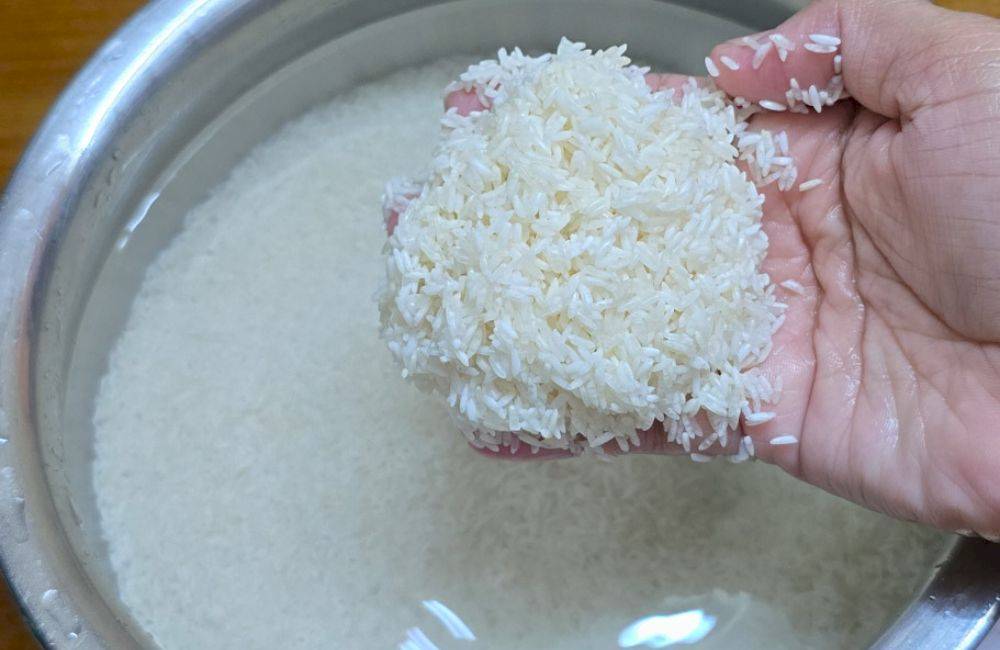
To make Mutton Tahari, first, heat ½ cup of oil in a pressure cooker. I am making it in a pressure cooker, but you can also prepare it in a regular pot.
Once the oil is hot, add some whole spices like 2 small cardamoms, 1 big cardamom, 3–4 black peppercorns, 2–3 cloves, 2–3 pieces of bay leaf, 1 small piece of cinnamon,Fry these spices in the oil for a few seconds until they release their aroma.
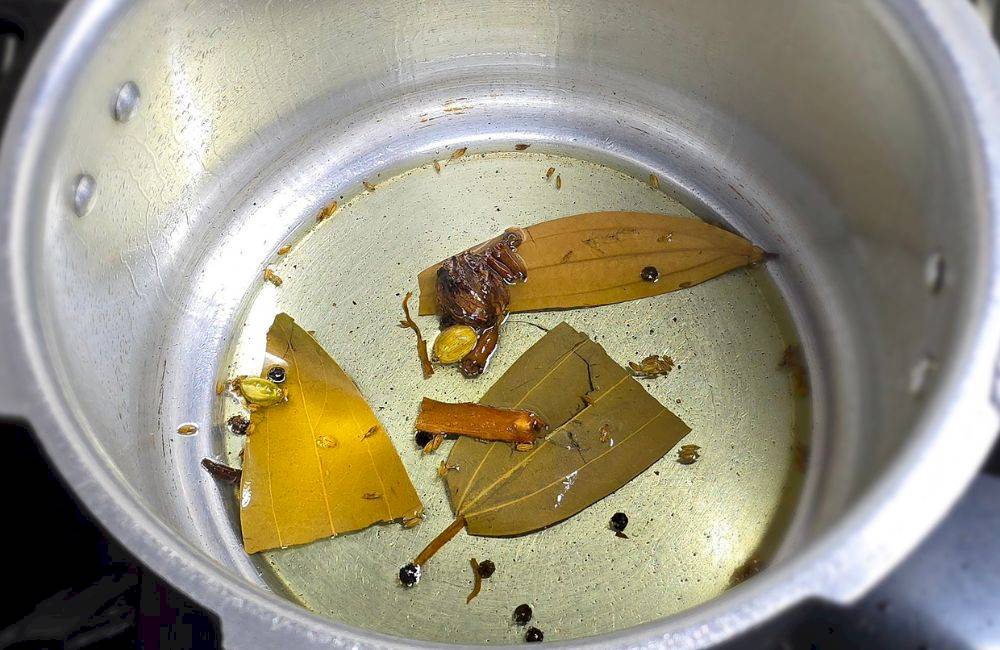
Now, add 1 large onion (finely chopped) or 2 medium-sized onions and fry until they turn golden. Be careful—do not over-fry them to a dark brown color, as that will change the taste of the Tahari.
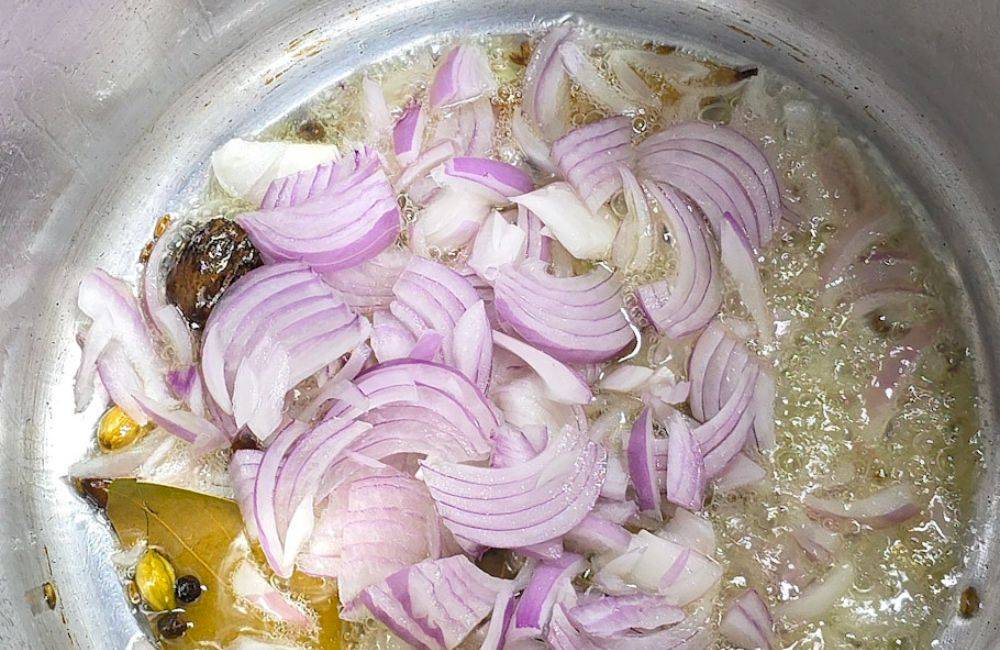
Once the onions turn golden, add 400 grams of cleaned mutton and fry on high flame for 2–3 minutes to remove any raw smell from the meat.
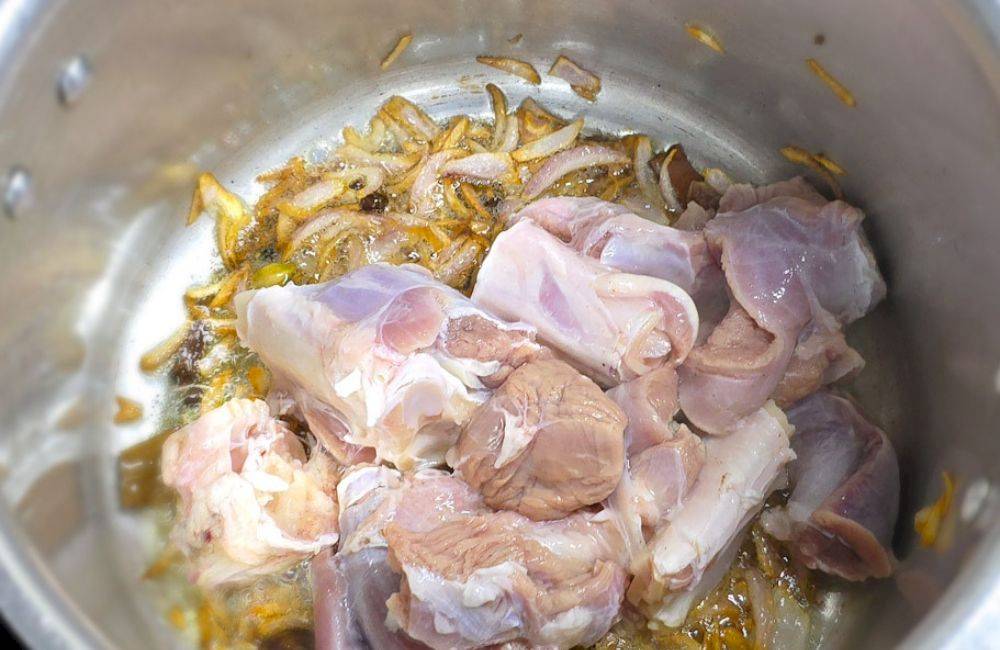
Now, add 1 tablespoon of ginger-garlic-green chili paste and sauté for a few seconds until the raw smell disappears.
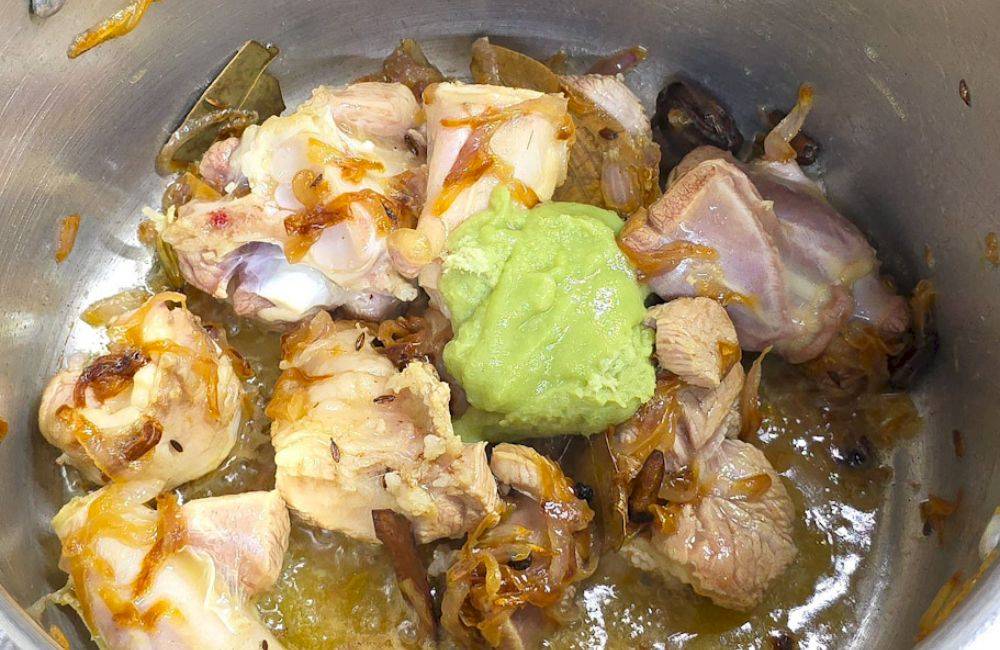
Now, add the following spices:
¼ teaspoon turmeric powder, 1 tablespoon Kashmiri red chili powder, 1 tablespoon coriander powder, 1 tablespoon cumin powder, ½ teaspoon regular red chili powder, Salt to taste,1 large chopped tomato

Mix everything well and roast the masala with the mutton on medium flame. The more you roast the spices and mutton, the tastier your Tahari will be. If you feel the masala is sticking to the pan, sprinkle a little water and continue roasting.
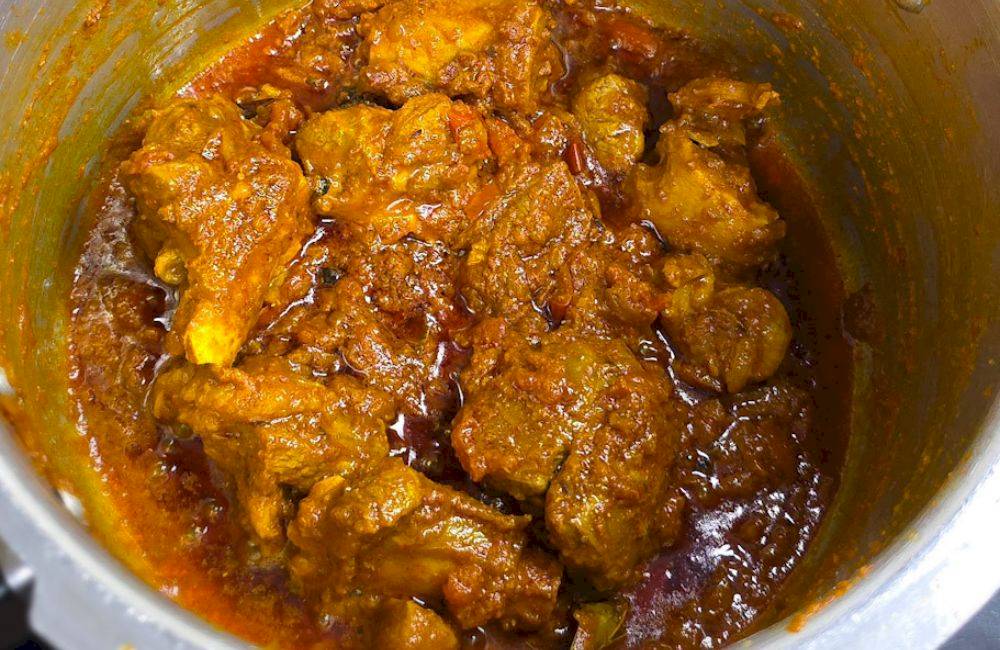
Once the masala is well roasted and oil starts separating from it, add 1 glass of water, mix everything, and close the pressure cooker lid.

Cook on high flame until 2 whistles, then lower the flame and let it cook for 15–20 minutes. The mutton should be 90% cooked at this stage because the remaining 10% will cook with the rice.
Turn off the stove and let the pressure release naturally. Once the pressure is released, open the lid and check if the mutton is cooked. If it’s not yet 90% tender, give it one or two more whistles.
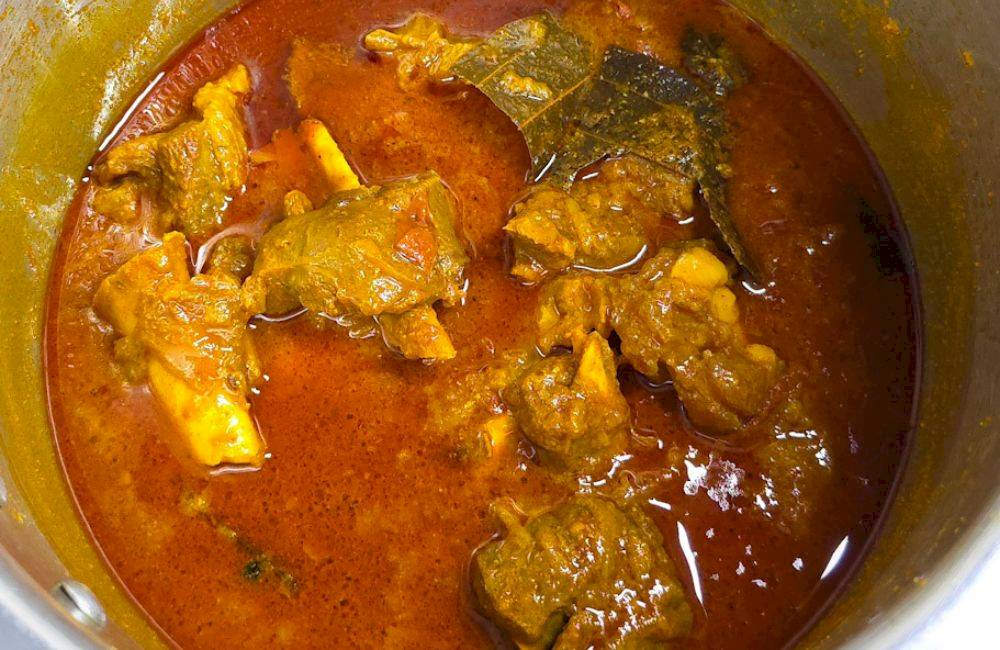
Now, add the soaked rice, along with:
Chopped coriander leaves, Finely chopped mint leaves, Finely chopped green chilies, few curry leaves and Mix everything well.

If using Kolam rice in a pressure cooker, add 4 cups of water for 2 cups of rice. If using Basmati rice, add 3 cups of water for 2 cups of rice. Sprinkle some garam masala powder and a few more green chilies.
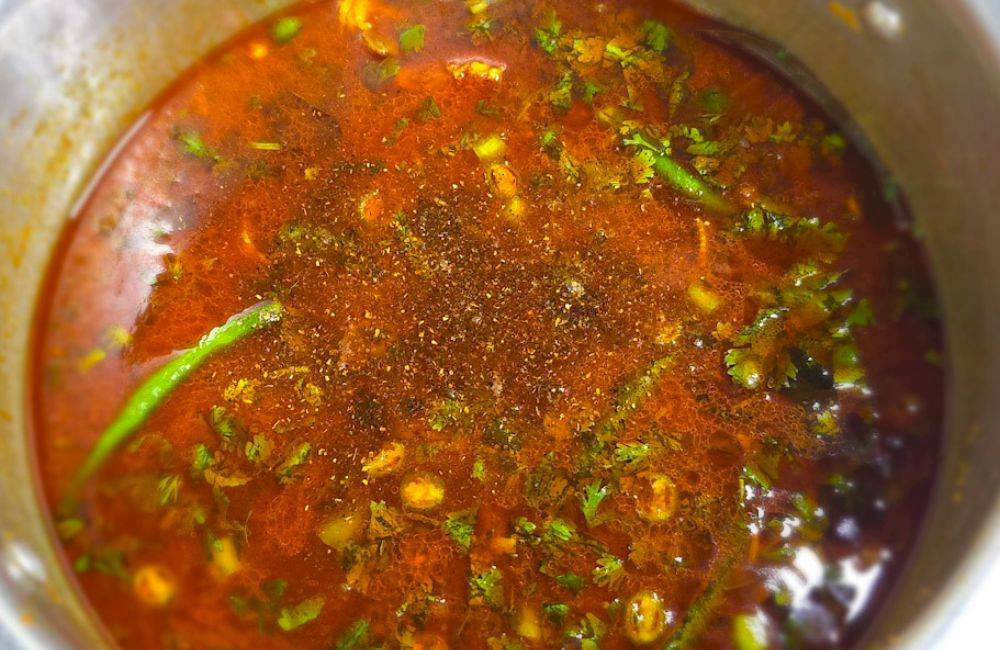
Mix well, close the pressure cooker lid, and cook on medium flame for 2 whistles.
Turn off the stove and let the pressure release naturally. Once the pressure is released, open the lid and let the steam escape for 2–3 minutes. Do not stir immediately—hot rice can break easily. Let it rest before gently fluffing the rice with a spoon.
If Cooking in a Pot Instead of a Pressure Cooker, Once the mutton is 90% cooked in the pressure cooker, transfer it to a pot.
Add 4 cups of water and let it come to a boil. Add the soaked rice, coriander, mint, green chilies, and curry leaves. Mix well, sprinkle garam masala, and cover the pot with a lid.
Once the rice starts boiling and most of the water dries up, reduce the flame to the lowest and let it cook on dum (slow cooking) until fully done.
Turn off the stove and let it remain covered for 5 minutes. Then, remove the lid and allow the steam to escape before gently mixing the rice.
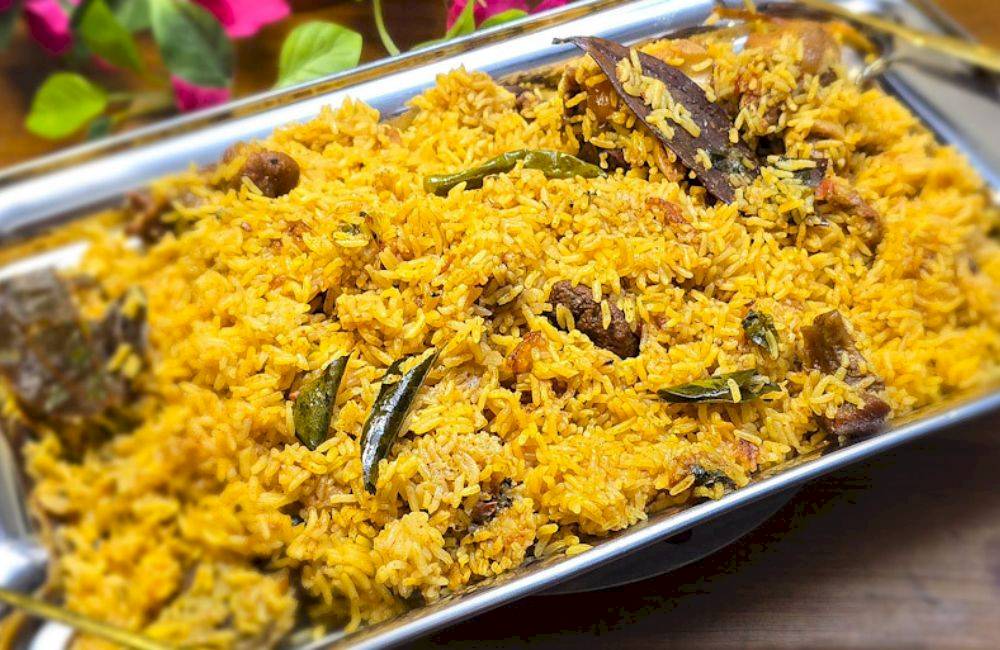
Your Mutton Tahari is now ready! To enhance its taste even more, serve it with the right side dishes. Here are some great options you can try:
Raita: Serve it with Pudina Raita, Boondi Raita, or even simple curd. The coolness of yogurt perfectly balances the spices in the Tahari.
Salad: A simple salad made with cucumber, onions, tomatoes, and fresh coriander adds a refreshing and crispy touch to your meal. If you have vinegar-soaked onions (sirke wali pyaaz), they pair exceptionally well with Tahari.
Pickle: Nothing complements Tahari better than some flavorful pickle! You can have it with mango pickle, lemon pickle, or even a mixed pickle of your choice.
Beverages: For a refreshing experience, pair your Tahari with a chilled glass of lassi, chaas (buttermilk), jaljeera, or any simple homemade sherbet.
Best Tips for Making Perfect Mutton Tahari
If you want your Mutton Tahari to turn out absolutely perfect, make sure to follow these simple yet important tips. The real joy of this recipe comes when each grain of rice is separate, the spices are well-balanced, and the mutton is soft and juicy.
Washing the rice thoroughly is very important. This removes excess starch and prevents the rice from becoming sticky.
If using Basmati rice, soak it for 30-40 minutes. If using Kolam rice, soak it for 10-15 minutes. This helps the rice cook perfectly and remain fluffy.
If you have time, marinate the mutton for 1-2 hours. This enhances its taste and makes it more flavorful.
The secret to a delicious Tahari is well-cooked spices. The better you sauté (Bhunai) the masala, the richer the flavor will be.
Make sure the mutton is 90% cooked before adding the rice. Otherwise, it may remain undercooked when cooked together with the rice.
In this recipe, I have used tomatoes, but if you want a richer taste, you can use both yogurt and tomatoes for a more balanced and flavorful dish.
After cooking, let the steam escape for a few minutes before mixing the rice with a spoon. Mixing hot rice immediately can break the grains.
Always add fresh coriander, mint, and green chilies. These ingredients enhance the flavor and aroma of Mutton Tahari, so try not to skip them.
While sautéing the spices, you can sprinkle a few drops of water if needed. This prevents the masala from burning and ensures a rich taste.
Follow these tips, and your Mutton Tahari will turn out absolutely perfect!
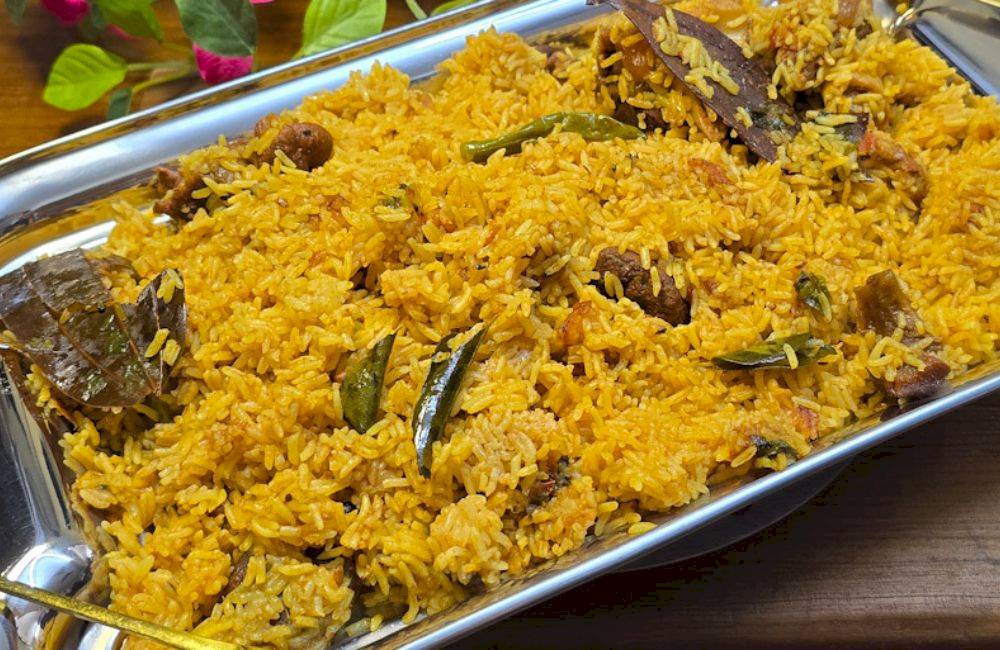
Chat with us
Categories
- Breakfast
- Lunch/Dinner
- Side Dish
- Rice
- Chicken
- Non - Veg
- Vegetable
- Drinks
- Desserts
- DIY
Large modal
Large modal
Modal title
Create An Account
Verify Mobile!
Please enter OTP code we sent via SMS:
Login Verify Mobile!
Please enter OTP code we sent via SMS:

